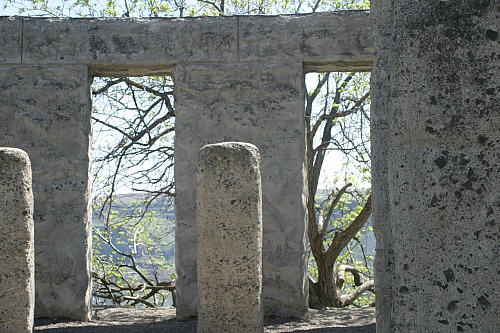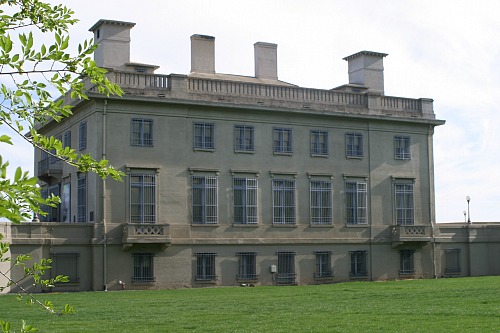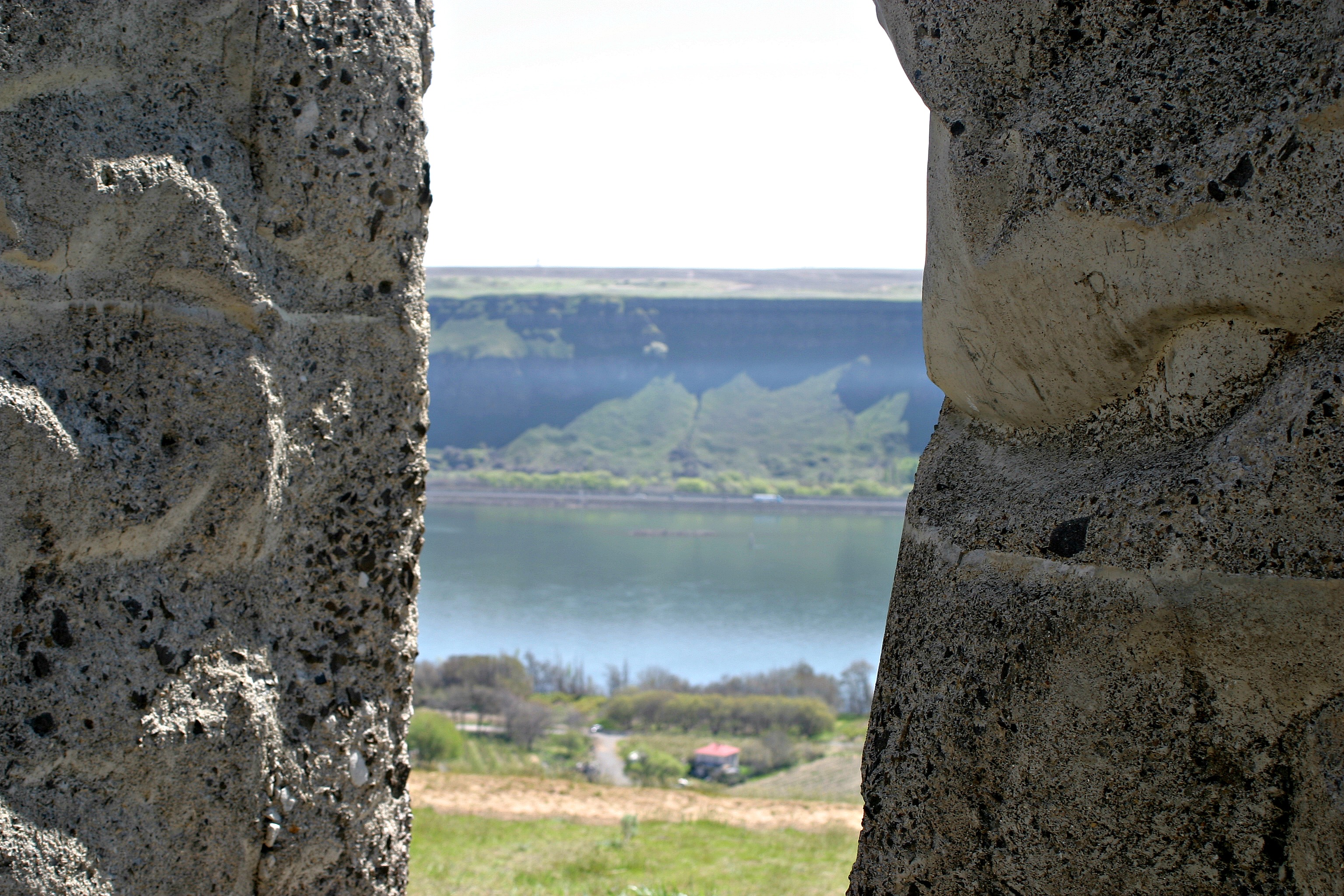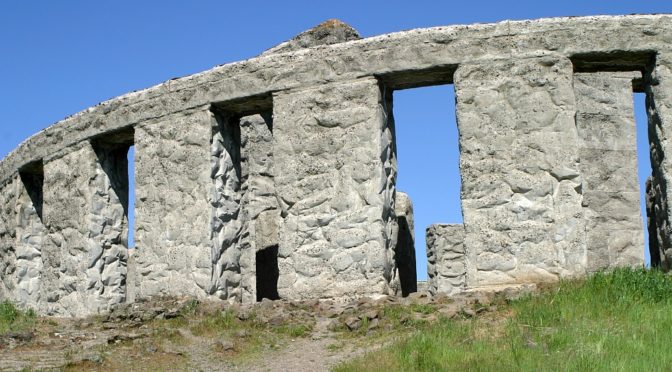Embarking on a road trip provides lots of opportunities for dreamers to do what they do best, as I learned on a recent family trip to the Columbia Gorge. I was to learn something important about my favorite past time in this trip.

Along the way, we stopped for a hike into the hills of the Ginkgo Petrified Forest. It was a perfect spring day, and all went well until we sighted a rattlesnake alongside the trail. I immediately wished for hiking boots instead of my ankle-baring tennis shoes. I wasn’t really afraid of the rattlesnake, exactly. Engaged in swallowing a mouse whole, its mouth was busy in that moment, anyway. The sight fascinated my husband, and it did have a certain National-Geographic-esque appeal. Still, the snake might have friends nearby, so it seemed best to move on.
During that hike, we spotted the petrified remnant of a ginkgo stump. Later, when I looked up this species, I learned that that scientists believe ginkgo trees originated 270 million years ago. Had I known that at the time, I would have gazed at the stump with more interest. As it was, the direct heat of the sun distracted me with thoughts of sunburn. I don’t much like using sunblock because I’m never quite sure what strange mixture of chemicals I’m slapping on my skin, so somewhat passive-aggressively, I’d forgotten to bring any.

If you’ve ever gone on a road trip you know they spark a wide range of emotions, from delight to grumpiness. Road trips test your mettle and patience. Like any good adventure, a road trip brings thrills but at the price of danger. Physical discomfort shows up in the form of hunger, the need for a bathroom break in the middle of nowhere, and the having to drive on despite weariness.
One of the highlights of the trip was a drive through Horse Heaven, a wild mountain range where wild horses are said to still run. We didn’t actually see any wild horses at that location but did spot large herds of deer. My aging Canon camera chose this point in the trip to faint, but we did capture a smart-phone image of one of the herds. Later, in the Toppenish Range, we would see many wild horses. We didn’t know what we were looking at until after it occurred to us that they horses were on open land with no farmhouses in sight. They are so numerous in this range, I learned, that they present a problem for the Yakama tribe. In the absence of natural predators, the horses have multiplied and are now overgrazing the sparse terrain, driving out the deer and putting stress on other wildlife native to the area. I if you would like to adopt a wild horse, you can inquire at the Yakama Nation site.

We spent the night at the historic Balch Hotel in Dufur, Oregon. The next day, we crossed the Columbia River and arrived at one of our main destinations, Stonehenge. No, that wasn’t a typo. There really is a Stonehenge overlooking the Columbia River. You see, the Stonehenge replica in Washington state was built as a war memorial, because of course Stonehenge belongs on the Columbia River and should be a war memorial. Right? You’ve probably heard the expression, “What in the Sam Hill?” Well, this memorial was built by that Sam Hill, the one who inspired the expression, a man whose imagination knew no bounds.

Sam Hill, who lived between in 1857 and 1931, was mocked because of his proclivity for creating anomalies that made sense in his own mind but startled others. Envisioning a farming utopia which he called the Promised Land, he built an expansive mansion overlooking the Columbia River, which he named Maryhill after his daughter, Mary.

Forgetting to factor the conditions actually needed for farming into his plans, Sam acquired land for his utopia in an arid region. No one wanted to join his community, and he eventually abandoned the Maryhill mansion. He would later turn it into the art museum it is today. Dedicating his home to artistic endeavors strikes me as appropriate for a creative individual like Sam.
Visiting Sam Hill’s Stonehenge and the Maryhill mansion taught me something. Dreaming big means that sometimes you’ll fall flat, and that’s okay. Not every dream will be golden, but you have to dream them all, even when they don’t make sense to anyone but you. You might be misunderstood. You might look like a fool and be ridiculed. You could be ahead of your time, like Sam. On the banks of the Columbia below the Stonehenge Memorial now lies a farm.

Although Sam Hill was mocked for his famous Promise Land failure, he also built the Cascade Highway, sparing motorists from muddy travel. Sometimes a dreamer is just what you need.


